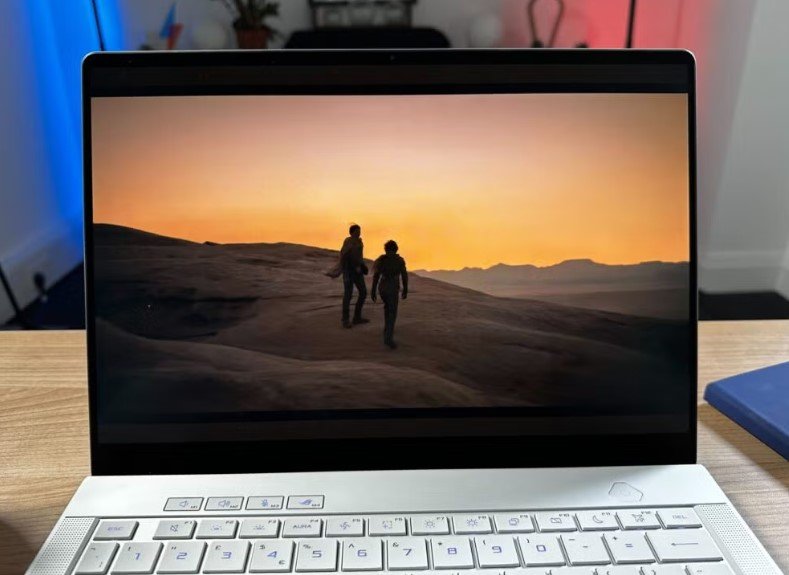Fix lifts restriction tied to Easy Anti-Cheat bug, opening path for smoother gaming upgrades
Gamers locked out of the latest Windows 11 update due to a system-crashing bug can finally breathe easy. After nearly 10 months of headaches and blue screens, Microsoft has quietly lifted its compatibility hold on version 24H2, clearing the path for more users — especially those running popular gaming setups — to upgrade.
The block had primarily impacted a niche but vocal segment: PC gamers using Intel’s 12th Gen “Alder Lake” processors in combination with software like Easy Anti-Cheat. That combo was triggering crashes, including the dreaded Blue Screen of Death (BSOD). Now, with a patch in place, Microsoft says it’s game on.
What Went Wrong for Gamers Trying to Update?
When Microsoft first released version 24H2 in late 2024, it touted the build as one of the most stable ever. But stability was hard to find for a surprising number of gaming laptops and desktops.
A bug in the OS meant systems running Easy Anti-Cheat — software used in games like Fortnite, Apex Legends, and Call of Duty — were more likely to crash during or after the upgrade process. Many affected machines were high-end setups featuring Intel vPro chips, commonly found in gaming laptops like the ASUS ROG Zephyrus series.
One sentence paragraph? Here you go.
Microsoft confirmed the problem earlier this year and placed a “compatibility hold” on the update for impacted systems, effectively freezing them on older Windows 11 builds until a fix was developed and tested.

Easy Anti-Cheat: A Small Tool With a Big Impact
This isn’t the first time Easy Anti-Cheat has tripped up an OS update. Because it’s deeply embedded in how games interface with system files, even minor changes to Windows can create chaos.
The software installs automatically with many major multiplayer games. It operates in the background, watching for suspicious behavior like aimbots or wallhacks. But in doing so, it hooks into core parts of Windows — and that’s exactly where things went sideways.
Microsoft had to work closely with Epic Games, which maintains Easy Anti-Cheat, to isolate the crash triggers. It wasn’t a quick fix.
Some users tried to manually uninstall Easy Anti-Cheat to get the update through. That didn’t work — and in some cases, it made things worse.
Which Devices Were Affected?
The update block mostly hit machines using Alder Lake+ processors — that is, Intel’s 12th Gen Core chips and certain 13th Gen variants with similar architecture.
Here’s a quick snapshot of impacted hardware:
| Affected Devices | Reason for Block |
|---|---|
| Intel vPro systems | Stability risk with Easy Anti-Cheat |
| ASUS ROG gaming laptops | Preinstalled gaming software conflict |
| Custom gaming rigs | Hardware tied to Easy Anti-Cheat games |
| Alienware & MSI PCs | Included 12th Gen Intel + EAC titles |
Notably, not all 12th Gen devices were blocked — just those that met specific conditions. But it still amounted to tens of thousands of users globally.
Microsoft’s Fix and Why It Took So Long
Why the delay? Testing. Microsoft couldn’t risk another BSOD scandal in the gaming world.
The fix had to work seamlessly across a wide range of hardware. That meant months of coordination between Microsoft’s Windows team, OEMs like ASUS and Dell, and Epic’s engineers.
Eventually, the issue was pinned down to how the OS interacted with EAC’s kernel-level operations during certain memory calls. With a patch finally verified across thousands of configurations, Microsoft removed the hold.
One sentence? Yep. The update block was officially lifted as part of July’s optional cumulative update rollout.
What Gamers Can Expect After Upgrading
Now that version 24H2 is back on the table, many gamers are wondering: Is it even worth the upgrade?
Turns out, yeah — especially if you’re playing graphics-heavy titles or using newer GPUs. Microsoft packed several subtle but important gaming improvements into 24H2, including:
-
Better GPU scheduling, which improves frame pacing
-
Enhanced auto-HDR support across more titles
-
Reduced background activity during fullscreen gameplay
-
Faster game launch times for Xbox Game Pass PC titles
For streamers, the upgrade also adds a more stable video encoder API, reducing dropped frames when using OBS or XSplit.
And yes, it still includes all the stuff for business users — but most gamers are here for the smoother gameplay and fewer system hiccups.
Signs That Microsoft Is Learning from Its Mistakes?
This isn’t just a technical patch. It’s also a bit of a culture shift.
Microsoft has faced plenty of criticism in the past for rushing out updates without fully checking their impact on gamers — a group that now makes up a huge chunk of its user base.
Some Reddit threads and tech forums had started to call version 24H2 the “gaming ghost patch” because of how many users were blocked. Microsoft rarely spoke publicly about the issue, which frustrated many.
The silence didn’t help. It created confusion about whether the problem was on the user’s end, the game developer’s side, or Microsoft’s own testing pipeline.
Eventually, though, Microsoft seems to have understood that these kinds of bugs — especially ones that affect high-end gaming setups — need to be prioritized, not buried in support forums.
Is It Safe to Upgrade Now?
Mostly yes.
If you were one of the unlucky few stuck on an earlier build because of this, Microsoft now recommends checking for updates manually. Just make sure your drivers are also up to date, particularly anything from Intel or your PC manufacturer.
One quick note: If you’re still running games that haven’t been updated in a while, you might still hit issues. But those are likely due to game-side compatibility — not Windows anymore.
In short? Microsoft has cleared the runway. It’s up to gamers to take off.








